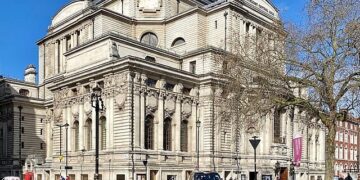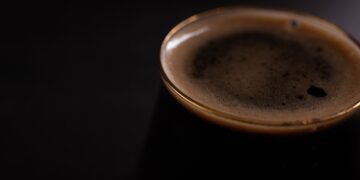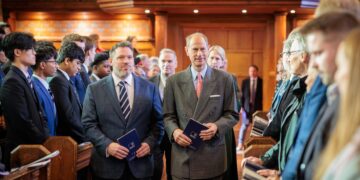A PROJECT led by scientists from the University of Reading have found what could be one of the earliest examples of a hospice.
It comes as excavations at Cookham Monastery continue, uncovering more information about the site which was led by Queen Cynethryth more than 1,200 years ago.
The royal site has been excavated by University of Reading staff and students every summer since 2021, with archaeologists returning for more digging this week.
Initial analysis of the 23 skeletons excavated from the 80 burials discovered at the site showed monastery residents suffered from poor health, ranging from skeletal trauma, to infections, to tumours.
Dr Ceri Falys, a specialist in human bone analysis, examined 23 remains at the University of Reading’s Osteoarchaeology Laboratory. Dr Falys looked at the biological sex, age-at-death and pathology of each individual.
Results showed that of the 14 remains excavated from the eastern trench of the monastery, there were seven males, six females and one child.
Most of the adults died after the age of 46, and most of the bodies were smaller than expected for their age.
Nine of these skeletons showed signs of skeletal trauma, which were likely to have been caused by accidents–one appeared to have had skull surgery before their death, while two had bone deformities likely caused by tumours.
Older individuals buried at this part of the site showed signs of osteoarthritis, and one patient appeared to have walked with a limp.
An infant who died before the age of one was discovered as part of the nine remains excavated from the western trench, alongside a male with poor dental health who was unable to chew on one side of his mouth.
Five of the burials indicated individuals with developmental defects, with one having a shortened leg, indicating crutch use.
Some of the skeletons showed signs of pressure sores, suggesting extended periods of lying down.
Experts say that further analysis and research is needed, and that further excavations at Cookham will enable archaeologists to find out more about the Anglo-Saxons buried at the monastery, including what caused their diseases and injuries, what their diets looked like, what treatments they received, and where they lived.
Excavation is set to continue until Augu
Professor Gabor Thomas, who leads the project, said: “Initial analysis of the remains discovered at Cookham indicates a high prevalence of individuals with unusual or severe pathological conditions.
“Nearly every person suffered from some form of health challenge, and this would have been obvious to those in their community.
“It is possible that the monastery may have been one of the UK’s earliest hospices, offering medical care to people with, ailments, injuries and those coming to the end of their lives.
“The diversity and rarity of conditions suggest that a proportion of these individuals may have come from beyond Cookham to seek healing.”
Fr Stephen Mills, Vicar of the Benefice of The Cookhams, said: “It is remarkable to witness how this excavation continues to unfold the story of Cookham’s ancient monastery, which may well have acted as one of the earliest hospices in our land.
“Over twelve centuries later, Holy Trinity Church still serves as a kind of hospital for the soul, offering comfort and hope to all who carry the wounds of life.
“We look forward to welcoming visitors once again this summer as this fascinating history comes to light.”
Tours of the monastery are available to book via: ticketsource.co.uk
























